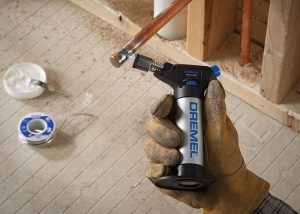Troubleshooting Your Butane Torch

The butane torch is, in many respects, a blissfully simple tool that is as reliable as it is versatile and effective. It has proven itself time and again in kitchens, laboratories, jewelry shops, artist studios and even automotive garages and home workshops for years.
That’s the good news. The bad news is that, while the humble butane torch has various and sundry uses and is prized for its dependability, it’s not indestructible and there are likely to be times when it’s just not behaving the way you want or expect it to. This is especially true if you use your butane torch on a regular basis.
So in this brief article, our experienced butane retailers review a couple of simple ways to troubleshoot your butane torch so that you can get back to whatever it is you happen to do with it.
Always Use High-Quality Refined Butane
This is not a troubleshooting tip, it’s a tip that will help you avoid having to troubleshoot your torch. One of the most common reasons butane torches act up is because people use the cheapest, dirtiest butane gas they can get their hands on.
Just as you wouldn’t put regular gas in a Lambo, so too you shouldn’t put cheap gas in your butane torch. Instead, always opt for high-quality refined butane from dependable producers like Puretane, Ignitus, Whip-It! and Newport Butane. That will help ensure that your torch always performs up to its potential, and that it lives out its intended useful lifespan.
Troubleshooting the Ignition
Most every butane torch worth buying these days has an instant electronic ignition system, and why not? They make operating the torch very simple and they’re generally reliable. However, “generally reliable” doesn’t mean “always reliable” and you’re likely to encounter instances when your torch won’t ignite, especially if you’ve had it for a while.
Frankly, your options for troubleshooting the ignition are limited. You can try adjusting the gas flow rate upwards and see if that helps it catch. Once you have ignition you can adjust it back down again. If that doesn’t work, and the torch is still under warranty, you can try making a claim for a faulty ignition.
Troubleshooting the Nozzle
The nozzle on your butane torch shouldn’t get clogged. However, that statement assumes you’re using high quality, refined butane from Newport Butane or one of the other companies we mentioned above. If what you’re using instead is impure, unrefined butane it’s very possible, even likely that you’ll wind up dealing with clogs.
If that’s the case go get yourself some compressed air (if you don’t already have some). What you’re going to do is shoot the compressed air right into the nozzle of the torch where the gas exits to create the flame. In most cases, this should loosen any particles that had become lodged there and were interfering with the flow of gas. Once the nozzle is clear go get yourself some quality butane so that it doesn’t happen again.
Final Thoughts
There aren’t a lot of things that can go wrong with a butane torch and if you use the right type of high quality, refined butane you may never experience any problems. That said, problems with the ignition system and/or the nozzle where the gas exits the torch and ignites into flame may still arise from time to time and will have to be dealt with.
Use the tips provided above to help you deal with ignition or nozzle problems. If you think you are having more serious issues stop using the torch altogether and either send it back to the butane manufacturer for repair or replacement or ditch it and get a new one.
